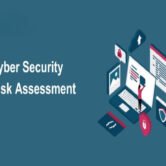
How does automated monitoring support application maintenance?
Real-Time Issue Detection
- Continuously tracks system performance, resource usage, and response times.
- Instantly identifies failures, errors, or crashes as they occur.
- Detects unusual patterns that indicate potential problems before impact.
- Reduces downtime by triggering alerts for immediate investigation.
- Enables visibility into backend services, databases, and network layers.
Performance Optimization
- Highlights slow-loading components and high-latency requests.
- Analyzes trends in CPU, memory, and bandwidth consumption.
- Identifies performance degradation across peak and off-peak periods.
- Supports tuning of code, queries, and configurations based on actual usage.
- Provides benchmarks for setting performance goals and thresholds.
Preventive Maintenance Enablement
- Supports early identification of warning signs like resource exhaustion.
- Schedules corrective actions before issues become critical.
- Flags outdated components or configuration drifts needing attention.
- Helps maintain healthy application states through proactive insights.
- Reduces emergency fixes by encouraging routine checkups.
Root Cause Analysis and Resolution
- Logs detailed system activity to trace issues back to their origin.
- Correlates events across multiple services for context-aware diagnostics.
- Minimizes guesswork and speeds up problem resolution cycles.
- Helps identify recurring issues for permanent fixes.
- Strengthens incident response with actionable, time-stamped data.
Reporting and Continuous Improvement
- Generates regular reports on uptime, incidents, and error frequency.
- Supports audit trails and documentation for maintenance history.
- Provides data for reviewing maintenance effectiveness over time.
- Informs decision-making for updates, upgrades, and resource allocation.
- Enables ongoing optimization aligned with service-level objectives.





